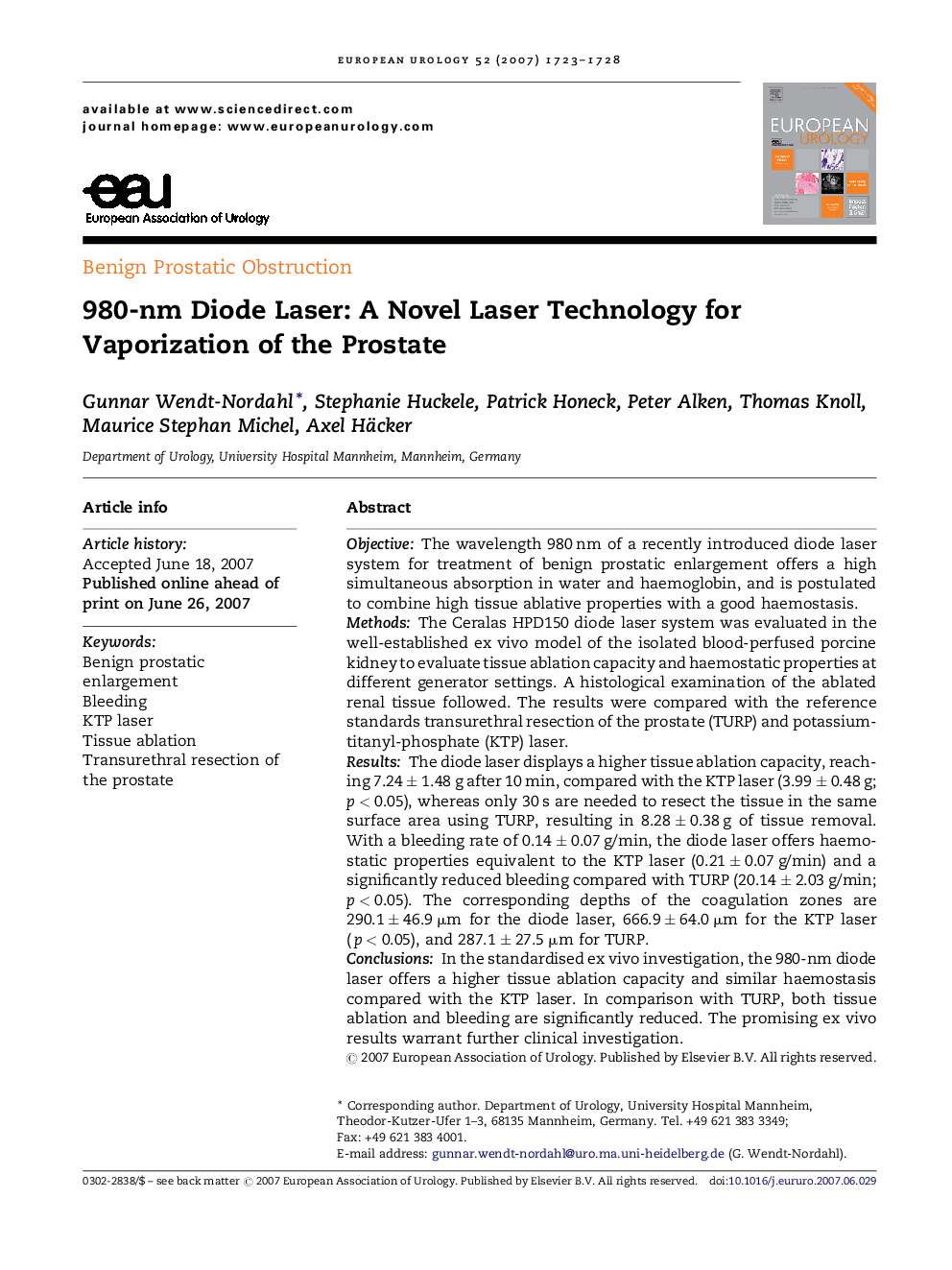| Article ID | Journal | Published Year | Pages | File Type |
|---|---|---|---|---|
| 3929600 | European Urology | 2007 | 6 Pages |
ObjectiveThe wavelength 980 nm of a recently introduced diode laser system for treatment of benign prostatic enlargement offers a high simultaneous absorption in water and haemoglobin, and is postulated to combine high tissue ablative properties with a good haemostasis.MethodsThe Ceralas HPD150 diode laser system was evaluated in the well-established ex vivo model of the isolated blood-perfused porcine kidney to evaluate tissue ablation capacity and haemostatic properties at different generator settings. A histological examination of the ablated renal tissue followed. The results were compared with the reference standards transurethral resection of the prostate (TURP) and potassium-titanyl-phosphate (KTP) laser.ResultsThe diode laser displays a higher tissue ablation capacity, reaching 7.24 ± 1.48 g after 10 min, compared with the KTP laser (3.99 ± 0.48 g; p < 0.05), whereas only 30 s are needed to resect the tissue in the same surface area using TURP, resulting in 8.28 ± 0.38 g of tissue removal. With a bleeding rate of 0.14 ± 0.07 g/min, the diode laser offers haemostatic properties equivalent to the KTP laser (0.21 ± 0.07 g/min) and a significantly reduced bleeding compared with TURP (20.14 ± 2.03 g/min; p < 0.05). The corresponding depths of the coagulation zones are 290.1 ± 46.9 μm for the diode laser, 666.9 ± 64.0 μm for the KTP laser (p < 0.05), and 287.1 ± 27.5 μm for TURP.ConclusionsIn the standardised ex vivo investigation, the 980-nm diode laser offers a higher tissue ablation capacity and similar haemostasis compared with the KTP laser. In comparison with TURP, both tissue ablation and bleeding are significantly reduced. The promising ex vivo results warrant further clinical investigation.
